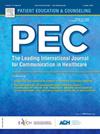Dismissive medicine and gaslighting of patients by physicians – A bioethics lens
IF 2.9
2区 医学
Q2 PUBLIC, ENVIRONMENTAL & OCCUPATIONAL HEALTH
引用次数: 0
Abstract
Objectives
This Discussion paper seeks to raise awareness of the phenomena of dismissive medicine (DM) and medical gaslighting (MG) and their underlying threats to principles of Bioethics. DM refers to mistreatment and negative patient-physician interactions. In most studies on DM, patients perceived physicians as invalidating their illness, as uniformed, as blaming and stigmatizing them, misunderstanding their condition, insensitive, rushing the visit, refusing to discuss pain, rude, and failing to maintain eye contact, listen, and to provide appropriate information about causes and treatments. A special case of DM is MG, referring to the experience of patients when their medical complaints and suffering are discounted, doubted, questioned, second guessed, or denied by physicians causing patients self-doubts. DM and MG may occur, at times, unintentionally Durbhakula and Fortin [1] and Fielding-Singh and Dmowska [2], resulting in severe ramifications. Surprisingly, existing reports focused on the clinical, economic, psychological, and emotional ramifications of DM and MG (Braeuninger-Weimer et al., 2019; Burke, 2019; Street et al., 2019; Merone et al., 2022; Claréus and Renström, 2019; Sheehan, 2020; Turan et al., 2019; Penner and Paul, 2017; Au et al., 2022; Dolezal, 2022; Shapiro and Hayburn, 2024; Fuss et al., 2024; Hunt, 2022) [3], [4], [5], [6], [7], [8], [9], [10], [11], [12], [13], [14], [15], rather than on the infringement of bioethics, which is the focus of this Discussion paper.
Conclusions
DM and MG not only cause patients to feel stigma, prejudice, shame, and blame, and develop fear of seeking clinical help but also, constitute infringements of beneficence, non-malfeasance, respect for patient right of autonomy, and distributive justice in patient care. This Discussion paper calls for more education about the implicit ethical aspects of these phenomena and policy modifications to efface DM and MG.
医生对病人的轻蔑医学和煤气灯——一个生物伦理学的镜头
目的本文旨在提高人们对轻视医学(DM)和医疗煤气灯(MG)现象的认识,以及它们对生命伦理学原则的潜在威胁。DM指的是虐待和负面的医患互动。在大多数关于糖尿病的研究中,患者认为医生对他们的疾病无效,穿着制服,指责和侮辱他们,误解他们的病情,不敏感,匆忙就诊,拒绝讨论疼痛,粗鲁,不能保持目光接触,倾听,并提供有关病因和治疗的适当信息。DM的一种特殊情况是MG,是指患者的医疗抱怨和痛苦被医生打折、怀疑、质疑、猜测或否认,导致患者自我怀疑的经历。有时,Durbhakula和Fortin[1]以及field - singh和Dmowska[1]可能会在无意中发生DM和MG,导致严重后果。令人惊讶的是,现有的报告集中在DM和MG的临床、经济、心理和情感影响上(Braeuninger-Weimer et al., 2019;伯克,2019;Street等人,2019;Merone et al., 2022;clarsamus and Renström, 2019;希恩,2020;Turan et al., 2019;彭纳和保罗,2017;Au等人,2022;Dolezal, 2022;夏皮罗和海本,2024;Fuss et al., 2024;Hunt, 2022)[3],[4],[5],[6],[7],[8],[9],[10],[11],[12],[13],[14],[15],而不是关于生物伦理的侵权,这是本讨论文件的重点。结论sdm和MG不仅使患者产生耻辱感、偏见、羞耻感和责备感,产生寻求临床帮助的恐惧,而且在患者护理中构成了对慈善、非渎职、尊重患者自主权和分配公正的侵犯。本讨论文件呼吁对这些现象的隐含伦理方面进行更多的教育,并修改政策以消除DM和MG。
本文章由计算机程序翻译,如有差异,请以英文原文为准。
求助全文
约1分钟内获得全文
求助全文
来源期刊

Patient Education and Counseling
医学-公共卫生、环境卫生与职业卫生
CiteScore
5.60
自引率
11.40%
发文量
384
审稿时长
46 days
期刊介绍:
Patient Education and Counseling is an interdisciplinary, international journal for patient education and health promotion researchers, managers and clinicians. The journal seeks to explore and elucidate the educational, counseling and communication models in health care. Its aim is to provide a forum for fundamental as well as applied research, and to promote the study of organizational issues involved with the delivery of patient education, counseling, health promotion services and training models in improving communication between providers and patients.
 求助内容:
求助内容: 应助结果提醒方式:
应助结果提醒方式:


